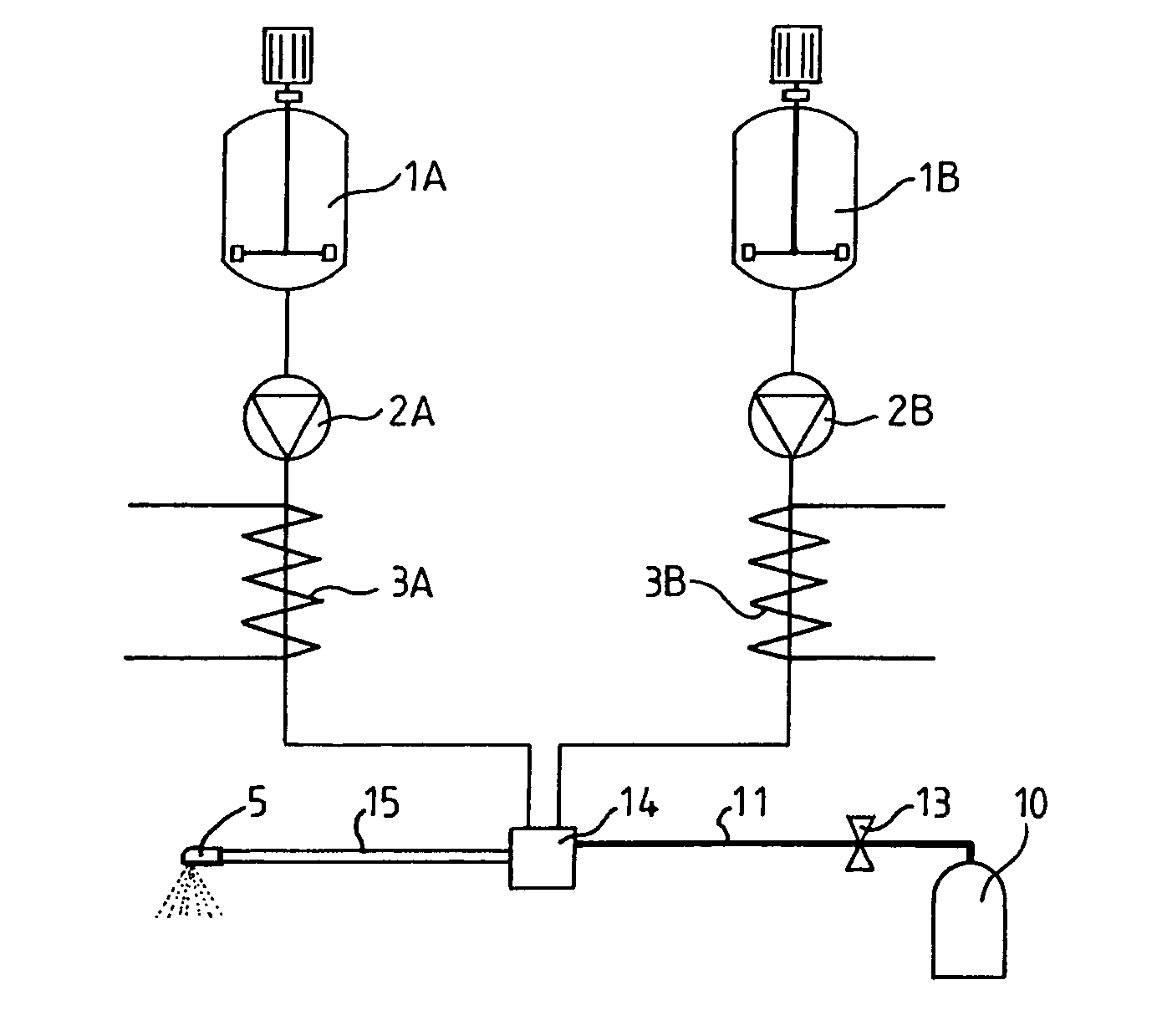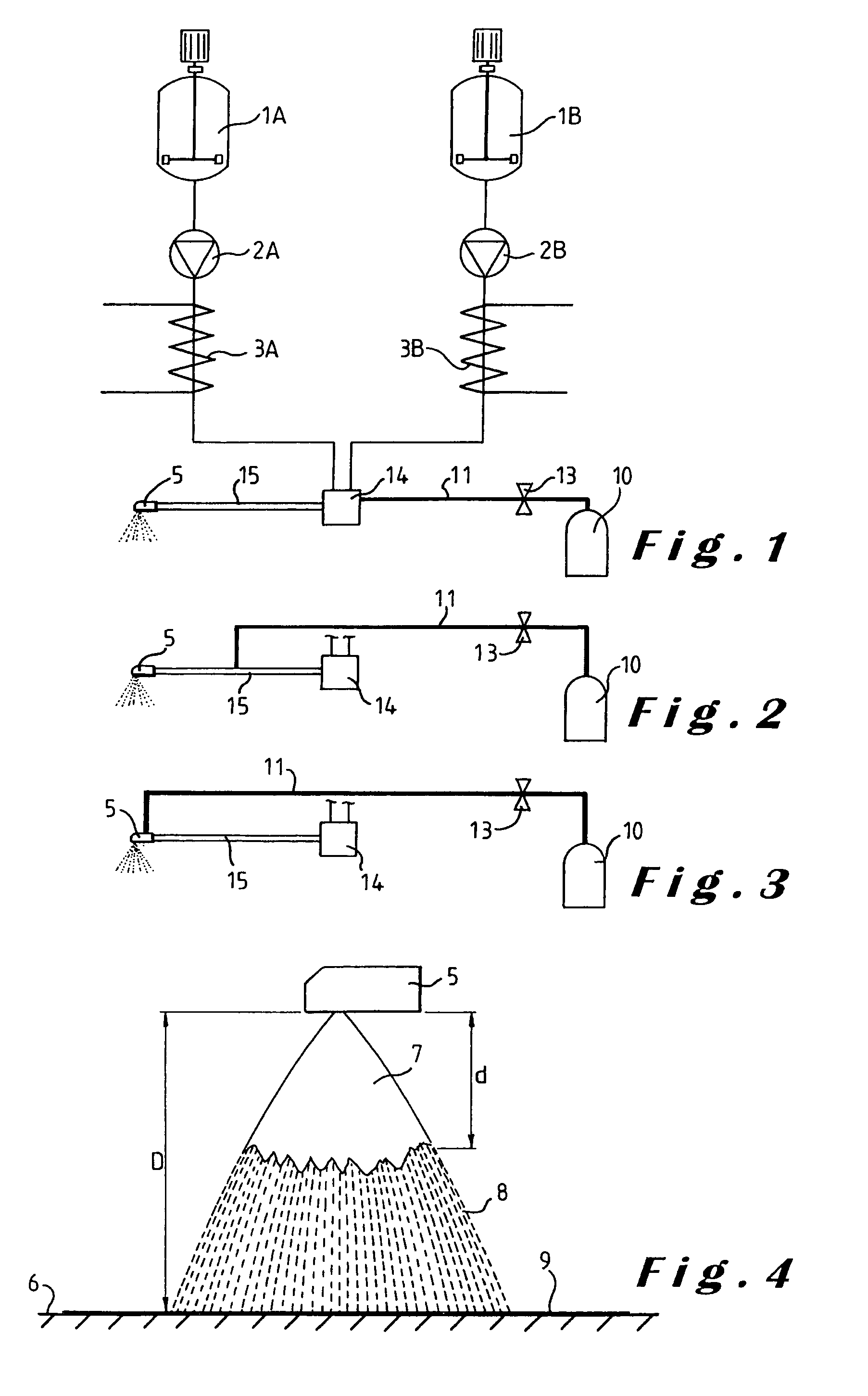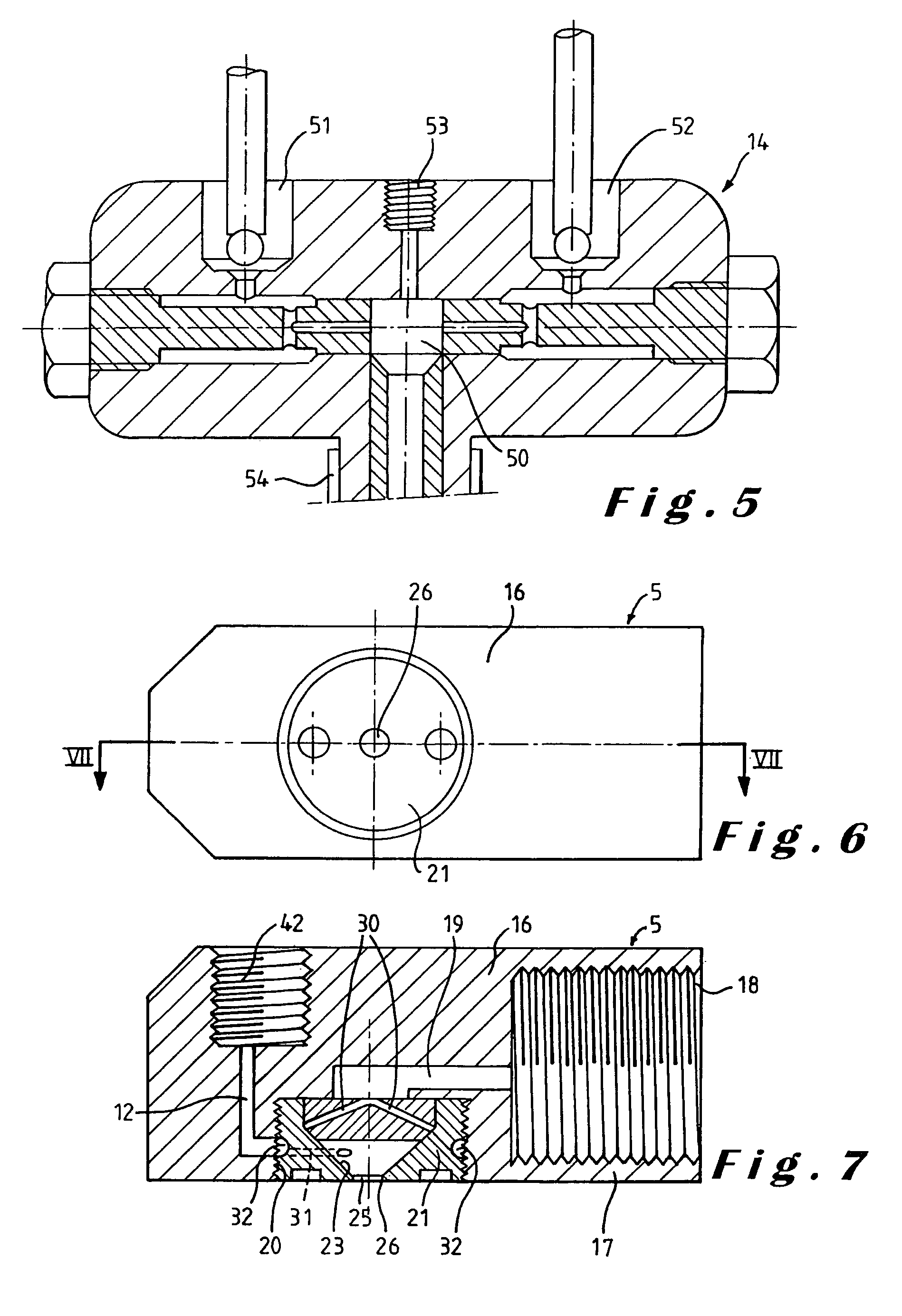Method for producing a moulded article comprising a sprayed polyurethane layer
a polyurethane layer and moulding technology, applied in the direction of superimposed coating process, liquid/solution decomposition chemical coating, manufacturing tools, etc., can solve the problem of clogging or no longer being made in practice, reaction mixture receiving too much kinetic energy, and/or too small droplets
- Summary
- Abstract
- Description
- Claims
- Application Information
AI Technical Summary
Benefits of technology
Problems solved by technology
Method used
Image
Examples
example
[0072]By means of a spray nozzle wherein pressurised nitrogen gas was mixed in the same way into a polyurethane reaction mixture as illustrated in FIG. 10 a flexible elastomeric polyurethane layer was sprayed in a thickness of 0.7 mm on a mould surface. The supply channel 19 of the reaction mixture had a diameter of about 1 mm whilst the total minimum cross-sectional area of the four grooves 29, measured at their downstream end, was about 0.35 mm2.
[0073]When spraying the reaction mixture at about 8 g / sec and injecting the nitrogen gas at a flow rate of about 4 g N2 / min, a stable spray pattern was obtained and the sprayed polyurethane layer had a density of about 950 g / l.
[0074]When using a similar prior art nozzle, having no possibility to supply a gas, the same stable spray pattern could be achieved but only with a flow rate of the reaction mixture of about 14 g / sec. This shows that a very limited addition of pressurised gas enables a substantial reduction of the flow rate of the re...
PUM
| Property | Measurement | Unit |
|---|---|---|
| total cross-section area | aaaaa | aaaaa |
| total cross-section area | aaaaa | aaaaa |
| volume diameter | aaaaa | aaaaa |
Abstract
Description
Claims
Application Information
 Login to View More
Login to View More - R&D
- Intellectual Property
- Life Sciences
- Materials
- Tech Scout
- Unparalleled Data Quality
- Higher Quality Content
- 60% Fewer Hallucinations
Browse by: Latest US Patents, China's latest patents, Technical Efficacy Thesaurus, Application Domain, Technology Topic, Popular Technical Reports.
© 2025 PatSnap. All rights reserved.Legal|Privacy policy|Modern Slavery Act Transparency Statement|Sitemap|About US| Contact US: help@patsnap.com



